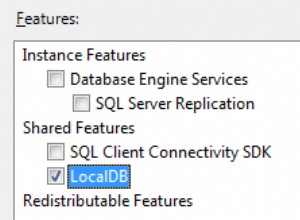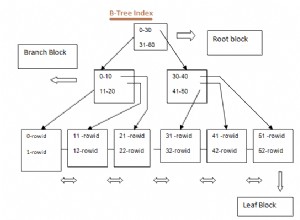Penso che la chiave per questo sia capire in quali blocchi cadono i 188,198 e 88. Nel cte sotto sto lavorando sulla base che un 88 termina sempre un blocco e sto assegnando il rowid dell'88 a tutti i rowid meno di esso, abilitando così il gruppo.
declare @t table(client_id int, m_id int,chid int,inv_id int,input varchar(20),dt datetime,rowid int)
insert into @t values
(133,928,9581,188,'yes_b1','2016-08-16 01:00:00:000',1),
(133,929,9581,198,'yes_b1','2016-08-16 01:10:00:000',2),
(133,930,9581,82,'referred_b1','2016-08-16 01:30:00:000',3),
(133,935,9584,188,'yes_b2','2016-08-16 01:00:00:000',5),
(133,936,9584,198,'yes_b2','2016-08-16 01:00:00:000',6),
(133,937,9584,82,'referred_b2','2016-08-16 01:00:00:000',7)
;with cte as
(
select s.*,
lag(s.hi,1,0) over (order by s.inv_id) as lo
from
(
select inv_id,rowid as hi
from @t
where inv_id = 82
)s
)
select t.client_id,
max(case when t.inv_id = 188 then input end) 'input(188)',
max(case when t.inv_id = 198 then input end) 'input(198)',
max(case when t.inv_id = 82 then input end) 'input(82)',
max(case when t.inv_id = 188 then dt end) 'date(188)',
max(case when t.inv_id = 198 then dt end) 'date(198)',
max(case when t.inv_id = 82 then dt end) 'date(82)'
from @t t
join cte on rowid <= cte.hi and rowid > cte.lo
group by client_id,cte.hi
Risultato
client_id input(188) input(198) input(82) date(188) date(198) date(82)
----------- -------------------- -------------------- -------------------- ----------------------- ----------------------- -----------------------
133 yes_b1 yes_b1 referred_b1 2016-08-16 01:00:00.000 2016-08-16 01:10:00.000 2016-08-16 01:30:00.000
133 yes_b2 yes_b2 referred_b2 2016-08-16 01:00:00.000 2016-08-16 01:00:00.000 2016-08-16 01:00:00.000




